SilverStone Strider Gold S V2 750W Review
SilverStone is the only company with so many compact PSUs in its portfolio. A while ago, it released the second version of the Strider Gold S with 750W of capacity.
Why you can trust Tom's Hardware
Transient Response Tests
Advanced Transient Response Tests
For details on our transient response testing, please click here.
In these tests, we monitored the response of the PSU in two different scenarios. First, a transient load (10A at +12V, 5A at 5V, 5A at 3.3V and 0.5A at 5VSB) was applied to the PSU for 200ms while the PSU was working at 20 percent load. In the second scenario, the PSU was hit by the same transient load while operating at 50 percent load. In both tests, we used our oscilloscope to measure the voltage drops caused by the transient load. The voltages should have remained within the ATX specification's regulation limits.
These tests are crucial because they simulate the transient loads a PSU is likely to handle (such as booting a RAID array or an instant 100 percent load of CPU/GPUs). We call these tests "Advanced Transient Response Tests," and they are designed to be very tough to master, especially for a PSU with a capacity of less than 500W.
Advanced Transient Response at 20 Percent
| Voltage | Before | After | Change | Pass/Fail |
|---|---|---|---|---|
| 12 V | 12.188V | 12.025V | 1.34% | Pass |
| 5 V | 5.092V | 4.970V | 2.40% | Pass |
| 3.3 V | 3.314V | 3.217V | 2.93% | Pass |
| 5VSB | 5.121V | 5.084V | 0.72% | Pass |
Advanced Transient Response at 50 Percent
| Voltage | Before | After | Change | Pass/Fail |
|---|---|---|---|---|
| 12 V | 12.108V | 11.943V | 1.36% | Pass |
| 5 V | 5.034V | 4.916V | 2.34% | Pass |
| 3.3 V | 3.270V | 3.174V | 2.94% | Pass |
| 5VSB | 5.064V | 5.031V | 0.65% | Pass |
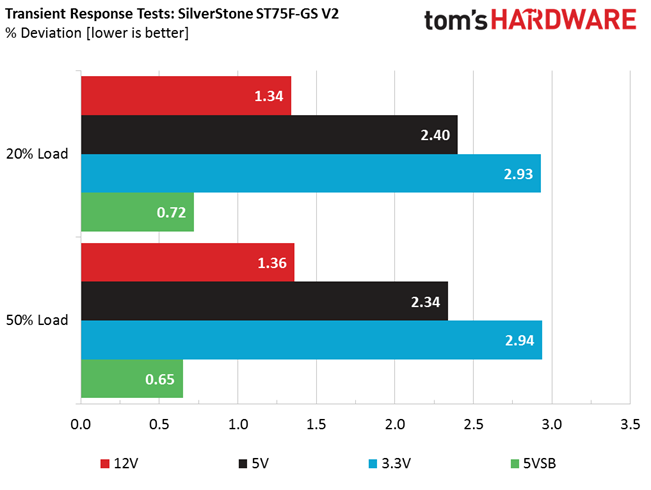




The +12V rail didn't fare so well in these tests, as the deviations in both cases exceeded 1% (we're accustomed to high-performance PSUs demonstrating ~0.5% deviations). The 5V rail also registered an average performance, though the big surprise was deviation on the 3.3V rail, which was within 3%. That wasn't good enough, since the low nominal voltage fell below 3.2V during the second test. Finally, the 5VSB rail performed well.
Here are the oscilloscope screenshots we took during Advanced Transient Response Testing:
Transient Response At 20 Percent Load



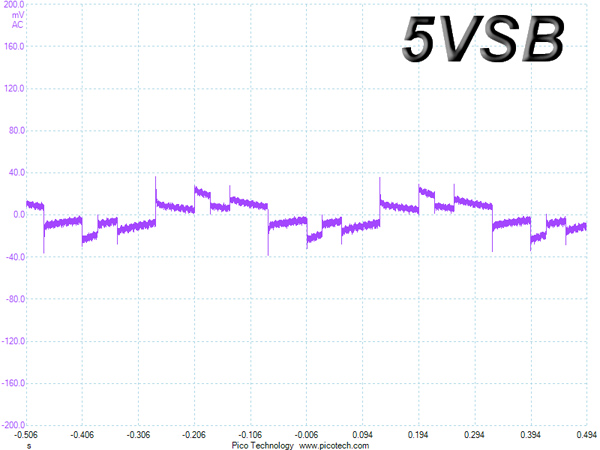
Transient Response At 50 Percent Load
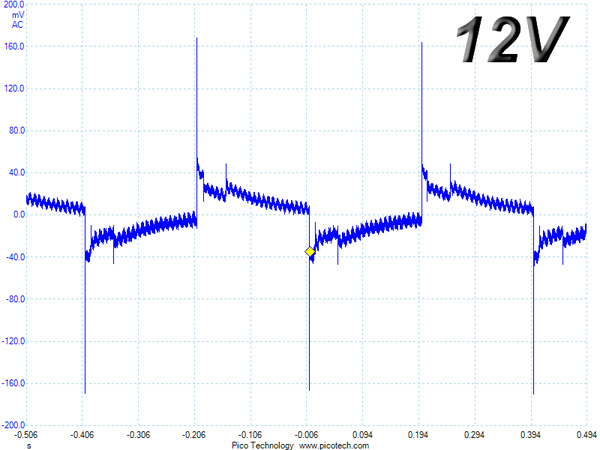
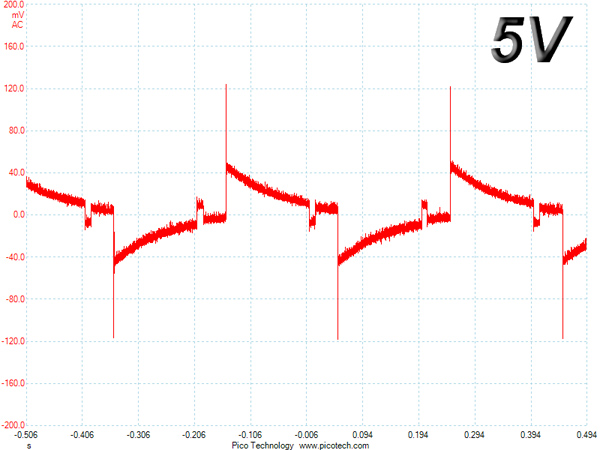


Turn-On Transient Tests
In the next set of tests, we measured the response of the PSU in simpler transient load scenarios—during the PSU's power-on phase.
For the first measurement, we turned off the PSU, dialed in the maximum current the 5VSB could output and switched it back on. In the second test, we dialed the maximum load the +12V could handle and started the PSU while it was in standby mode. In the last test, while the PSU was completely switched off (we cut off the power or switched off the PSU by flipping its on/off switch), we dialed the maximum load the +12V rail could handle before switching on the PSU from the loader and restoring the power. The ATX specification states that recorded spikes on all rails should not exceed 10 percent of their nominal values (+10 percent for 12V is 13.2V, and 5.5V for 5V).
Get Tom's Hardware's best news and in-depth reviews, straight to your inbox.
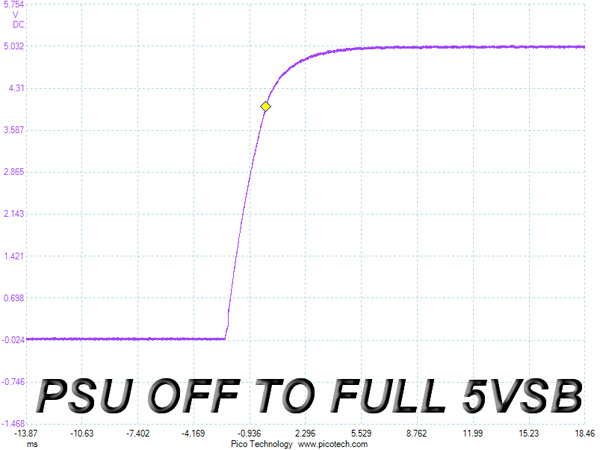
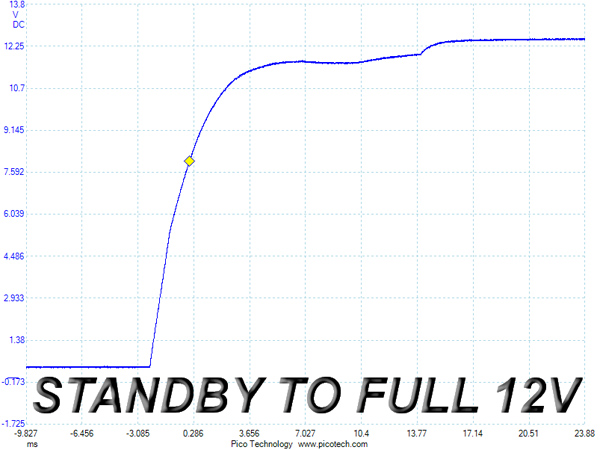
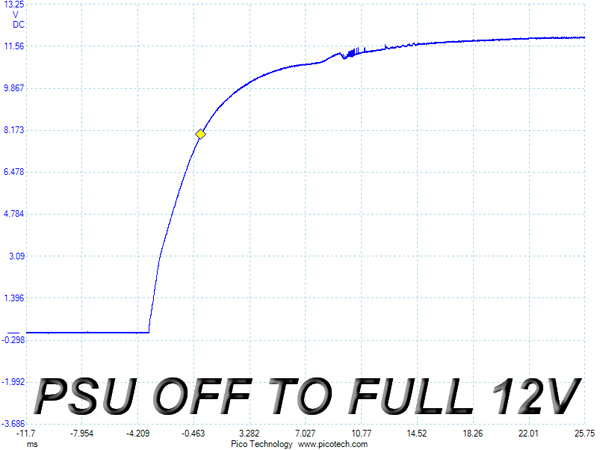
The waveform at 5VSB is perfect, while during the second test we didn't notice any voltage overshoots or spikes. In the last test, we saw a small voltage overshoot, though it wasn't anything to worry about. We cannot say the same for the small period of increased ripple following that overshoot.
Current page: Transient Response Tests
Prev Page Cross-Load Tests And Infrared Images Next Page Ripple Measurements
Aris Mpitziopoulos is a contributing editor at Tom's Hardware, covering PSUs.
-
Eggz At first glance, I thought this was a 750 w in an SFS form factor. Womp! . . . Still seems like a decent PSU, though.Reply